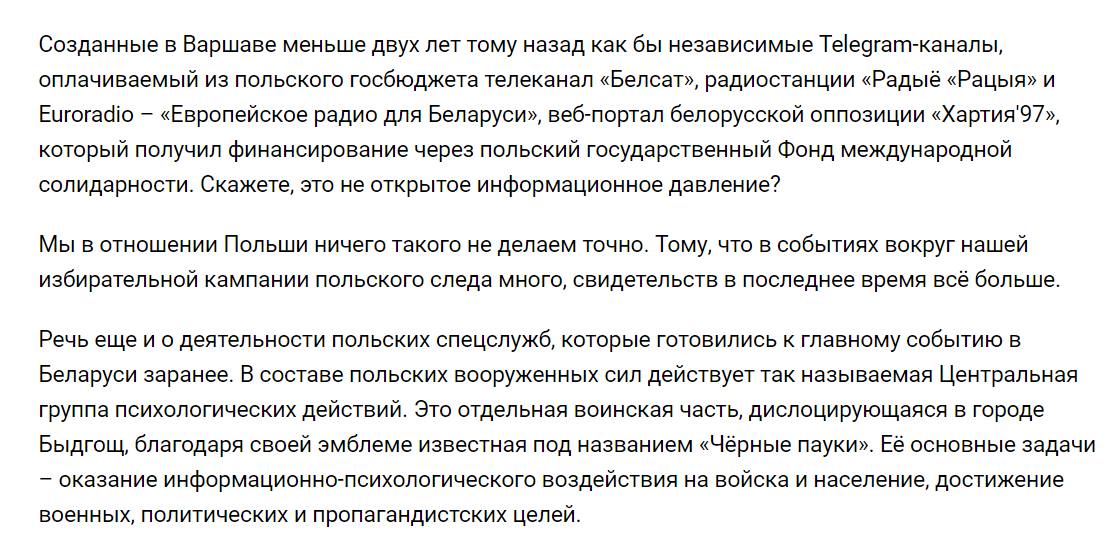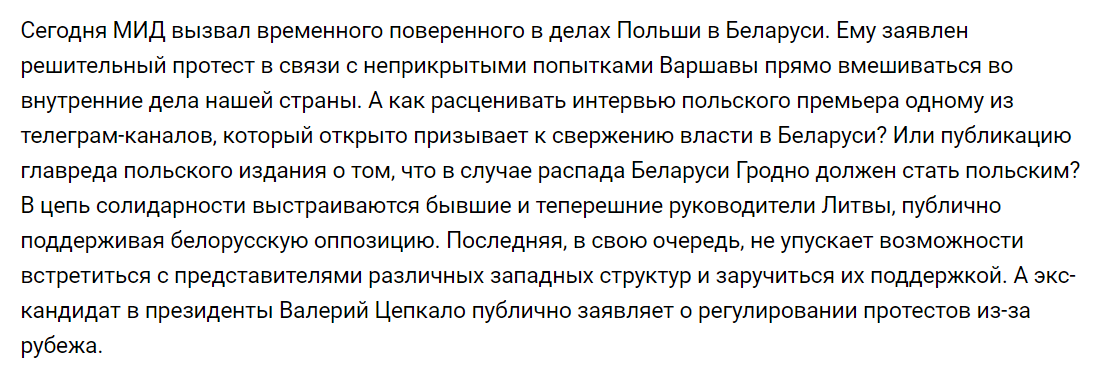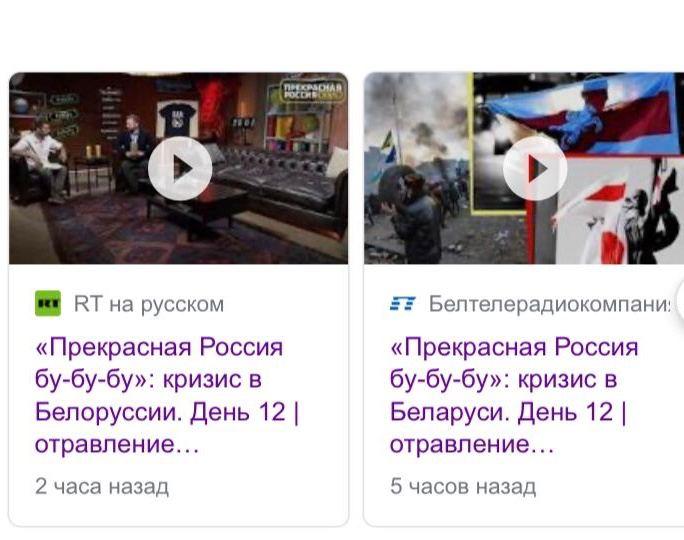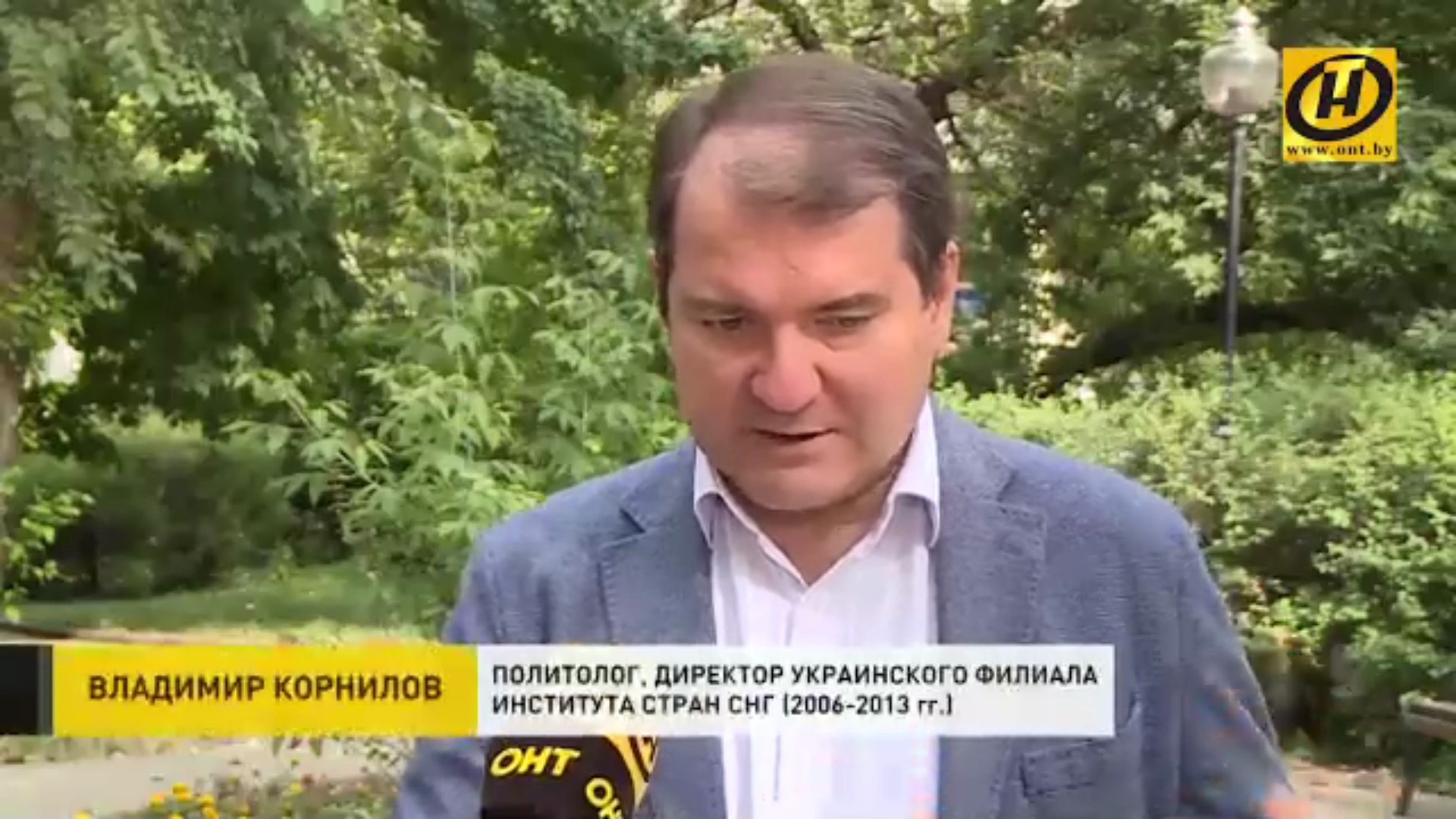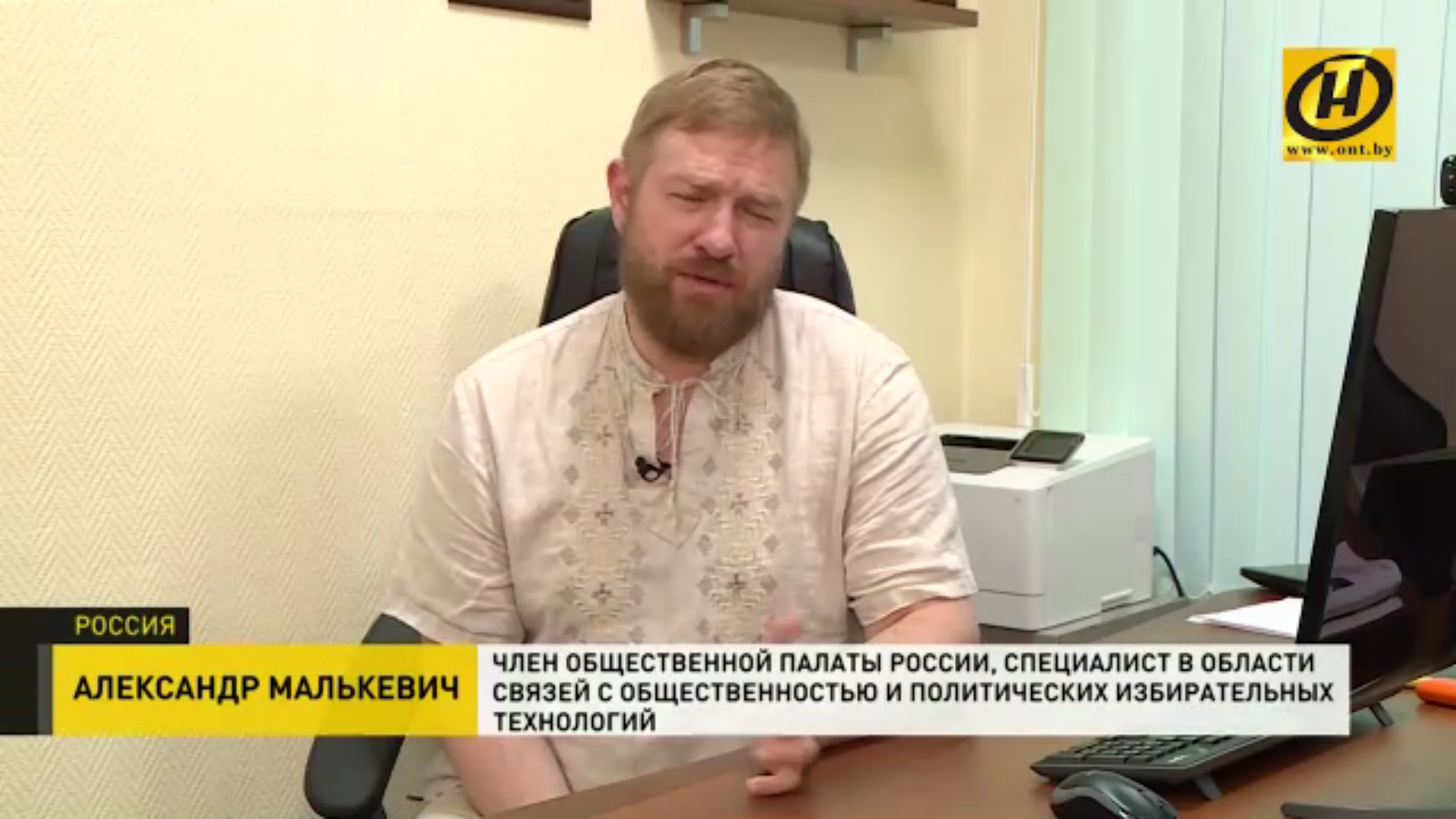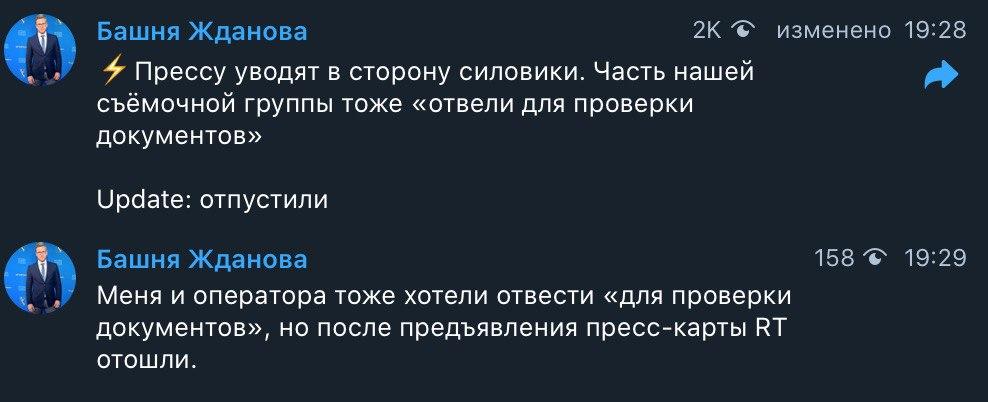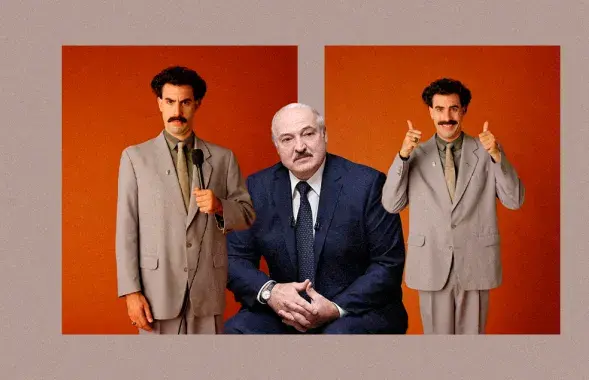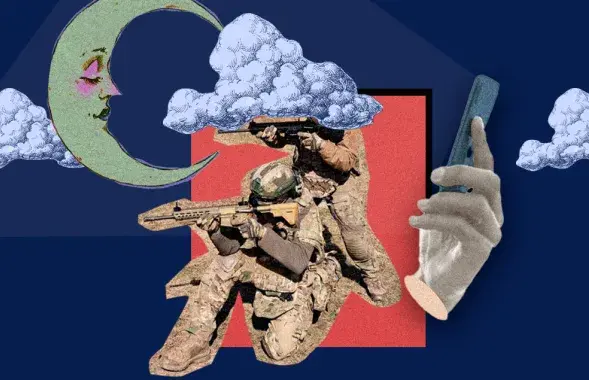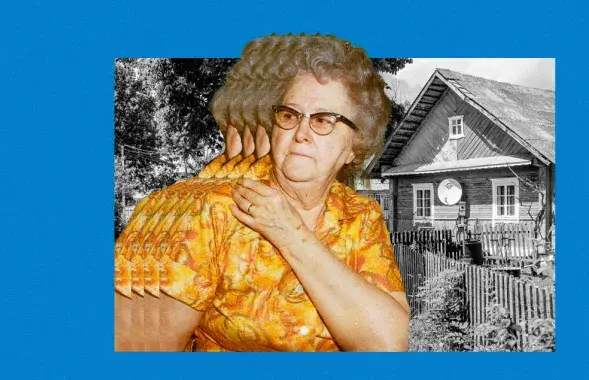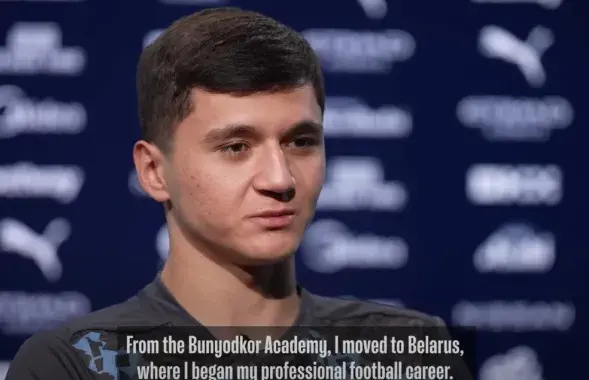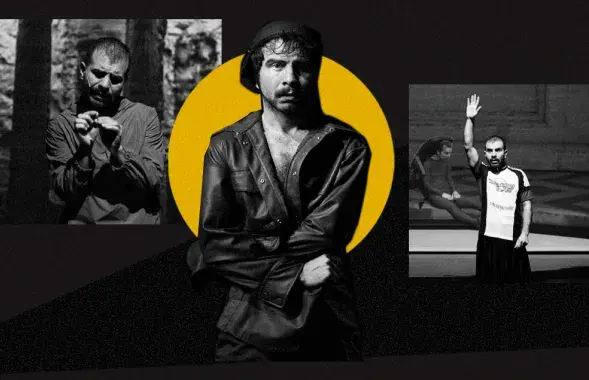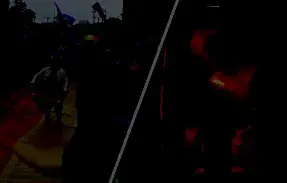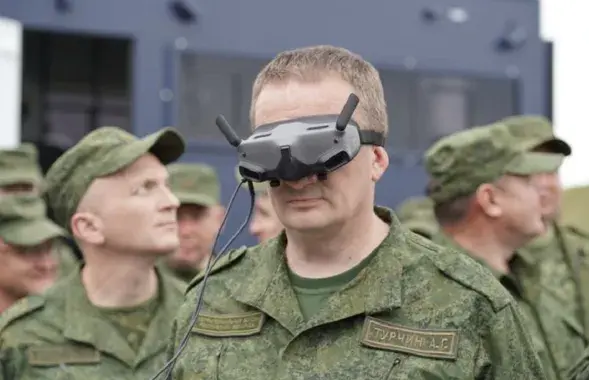Russia Today propagandists change face of Belarusian state media

RT crew in Minsk during the protests / Euroradio
About three weeks ago, Belarusian propaganda changed dramatically. Clumsy “Anti-fakes” that called for anti-fake campaigns later as well as odious expert comments about fascists under white-red-white flags and NATO aggression, were replaced by clever manipulative videos. The tone of the news describing the domestic political situation has changed.
The industry is huge. It’s not just the Russians who have come to replace the departed and striking state media workers. Belarus is included in a huge propaganda network.
How it works
Here's one simple example. On August 25, the site Ukraina.ru published an article "From Radio Racyja to Black Spiders: Instruments of Poland's Media War against Belarus". Three days later, on August 28, this article was quoted by the pro-government propaganda telegram channel “Zhioltyie Slivy”. But this was only the beginning of the journey.
The text of the article in the program Kontury (Contours) on ONT is reproduced by Yury Hroyerau. In the lead-in to one of the stories, the word for word repeats excerpts from an article from Ukraina.ru, while neither in the text nor in the TV report did he indicate that it was a quote. Everything sounds like the author's text.
Thus, circles from one propaganda article cover a Belarusian audience of tens of thousands of people. There are hundreds of such articles. And now the road to Belarus is open for all of them.
Russia came and put things in order
The informational sovereignty of Belarus was ended in the shortest possible time. The agenda of the Belarusian state media was completely absorbed by the pro-Kremlin media field and narratives.
Wagnerians detained near Minsk and 170 more abstract Minsk militants? Forget it. Now they say on TV that the protests were organized by the West according to the manuals of the “color revolutions”. They say that these are not protests at all, but destabilization, which is coordinated from Poland, Lithuania, the United States, and the Czech Republic. “Peaceful protests” are not peaceful at all, they say on TV. There are some people who go to rallies, they are marginals who get paid for this. Protesters threaten officials and siloviks, as well as their relatives.
NATO holds drills menacingly on Belarus' western border, builds up troops, and can organize military provocations, including the use of jet fighters. Poland is looking at Belarus in a predatory manner and wants to take over the Hrodna region.
The West aggressively intervenes in Belarusian internal affairs, tries to spoil Belarusian-Russian relations, and creates massive anti-Russian sentiments. But the independence of Belarus is possible only in a tight alliance with Russia. It will protect Belarus from the aggressive influence of the West.
Information humanitarian aid
Strikebreakers from Russian TV were personally invited to Belarus by Alyaksandr Lukashenka. "I asked the Russians to give us two or three groups of journalists just in case. These are 6 or 9 people from the most advanced television,” he said.
The RT channel was "the most advanced". It is headed by Margarita Simonyan.
After that, a mobile station of the RT TV channel was regularly seen at street rallies in Minsk, and the correspondent of this TV channel Kanstantsin Prydybaila received “access to the body”. More precisely, to all the bodies: here he asks Lukashenka questions, and here he is in a car with the head of the Ministry of Internal Affairs Karayeu.
True, at first, foreign propaganda experts made small mistakes. The country was sometimes called Belorussia like it is common among Russians.
It all started with the reprint of materials from the RT website and reposts from the RT telegram channels to the pro-government Telegram channels. But soon the propaganda black-and-green train picked up speed and rushed at full speed.
Now, not only TV, but also the official telegram channels of the state media are supplied with fresh content from RT, where “talking heads” say that “the protest has subsided”, and that only “schoolchildren, tired of the authorities, clowns and idle onlookers,” go there. And there are stories from the streets about “soft detentions” of protesters by riot police.
Previously, the domestic propaganda product was managed by local experts, but now a Russian force has landed on Belarusian TV. For example, Vladimir Kornilov, a political columnist for Russia Today and a columnist for the above-mentioned Ukraina.ru site, could be seen on our channels.
Another expert who appeared on the air of the "upgraded" ONT is Alexander Malkevich. In 2018, he headed the USA Really propaganda project, which is considered part of Yevgeny Prigozhin's “media factory”. Soon after the launch, the publication was blocked in the United States, and the FBI became interested in Malkevich. Malkevich is also the president of the Foundation for the Protection of National Values in Russia.
Security officials + RT employees
Employees of the Russian TV channel have carte blanche on the part of the authorities and security forces in Belarus. For example, on August 27, during the mass detentions of journalists on Freedom Square (although the Ministry of Internal Affairs insists that it was not detention, but a “delivery” to the police department to verify accreditation), the security forces did not touch RT employees. It was enough for policemen to look at their accreditation cards on the spot.
After that, the staff of the Russian channel reported about 200 protesters on Freedom Square. And they made a picture convenient for them, which is difficult to refute because there are no journalists left there.
In front of RT cameras, the Belarusian riot police avoid brutal detentions, limiting themselves to gentle escort to the paddy wagon. Then there are stories about how the protesters are dispersed "without the use of force".
Fakes and distortion
On August 26, RT employee Igor Zhdanov, now working in Belarus, published a video on his Telegram channel in which Nina Bahinskaya is trying to take away her white-red-white flag from a riot policeman. He accompanied this with a comment:
“Next time they tell you that security officials are not provoked in Belarus, show them this video. By the way, she was never detained -- only men were taken to the paddy wagon”.
Nina Bahinskaya is 73 years old. Next to the of two-meter riot policeman, she looks tiny. She's not much of a provocateur. You'd rather call that the riot policeman who tore the flag from its pole. So further events are taken out of context. Fortunately, there is a full video of what happened.
This is not the first time that Russian experts have chosen such clumsy methods of propaganda. On August 21, Belarus 1 broadcasts a story in which Maryia Kalesnikava leaves a rally in Zhlobin amid the shouts of people “Go away”, allegedly addressed to her. But if you watch the original video, it turns out that people told Lukashenka not Kalesnikava to leave.
And there was also a video with Russian doctors (including even the former chief sanitary doctor of Russia Gennady Onishchenko) dissuade their Belarusian colleagues from striking. They say that doctors simply do not have the right to go on strike, because people's lives depend on their work. But the Belarusian doctors were not going to declare a strike. They go out only for short protests and chains of solidarity. But after watching the video, one could think that the protesting Belarusian doctors violate professional ethics.
Leveling protest activity
For the second week, rallies in support of Lukashenka have been held throughout Belarus. The participants have held slogans “We will not give up our beloved” and “For Father”. Before this summer, Lukashenka was called "Father" exclusively in Russia. And on the Internet, the rallies are called "lutings" similar to "putings" -- rallies of state employees in support of Vladimir Putin.
Actually, the very name of these rallies speaks of the "Russian trace". Belarusians stopped calling Lukashenka “Father” twenty years ago. But in other countries - and in Russia in particular - they still call him that.
The main idea of the propaganda stories now is not the assertion of Lukashenka's victory in the elections, but an attempt to convince the Belarusians that the protest has fizzled out, went away and drowned. The purpose of this narrative is simple: to demotivate people. To stop the resistance, so that the opponents of Lukashenka again disunite and forget about solidarity.
The task of such propaganda is to make people stop resistance, quarrel and doubt themselves. And believe that nothing can be changed -- it's not even worth trying.

